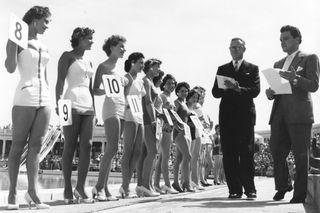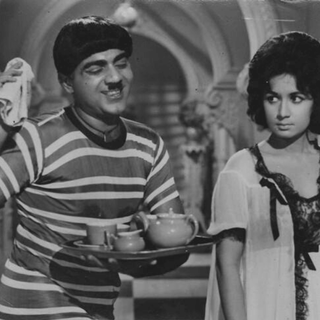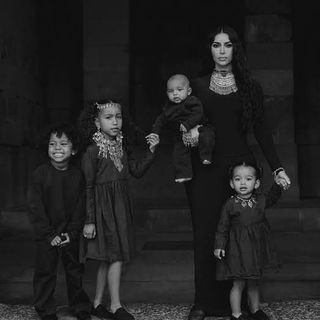
How Hot Are You on a Scale From 1 to 10, and Why Does Anyone Care?
Trying to understand what is probably the dumbest misogynistic thing known to woman.

Before we cancel this system, I’d really like you all to know my mother believes I’m a solid eight. For real. Cross my heart.
Anyway, ever since we developed the power to reason and develop idioms like ‘beauty is in the eye of the beholder,’ we’ve known there is no universal quantifier for prettiness. Yet, generation after generation of men and dudes and bros have spent time developing system after system, fine-tuning their granular details, just to figure out exactly how to treat a woman by virtue of how much they’d want to impregnate her. (Metaphorically, of course — real bros use protection.)
Many, from noted misogynists running pick-up artist forums to Mark Zuckerberg, have spent painful(ly cringeworthy) amounts of time and energy attempting to decode how hot women are, or how ‘not’ they are by a variety of systems. This is not to say that women aren’t willing participants –rating men, rating other women, rating themselves. However, the majority of such ratings continue to be developed by men and aimed at women.
The most popular of the rating scale lot is the one-to-10 hotness scale, amidst important contenders like the binary format — wherein you decide if you’re either interested in a woman or not via a 1-0 binary. Another is the embarrassment metric — wherein you rate how embarrassed you’d feel if you were caught in public with the woman. The 1 to 10 scale is grotesque in its simplicity: a one is “as disgusting as it gets,” according to a fraternity website I refuse to link; a four is an “ultimate try-hard,” according to this women’s lifestyle portal; and a six is what singer Selena Gomez feels every other day. Eights, of course, are celebrities. Tens are either mythical, or rare — it seems Helen of Troy and Cleopatra qualify, as the only criteria is that a 10 must inspire large-scale wars by virtue of just “hotness.”
Related on The Swaddle:
For Women, a Shaved Head Isn’t About Getting Attention; It’s About Being Seen
We’re all old enough to know why this scale is misogynist — it tries to attach numeric value to a literal person as if they were a goat in a farm; it propagates harmful beauty tests, sows seeds of insecurity, and more. However, such rating systems’ laser-sharp focus on another individual’s physical attributes hides exactly how much they are intertwined with men’s own social capital, as compared to gauging arbitrary attractiveness. Men rate women to determine how socially worthy they’d feel with that woman on their arm, and so rate their own ability to approach and woo women.
Take into consideration the scale’s logical failings as a barometer for attractiveness– it never does account for individual preferences. One man’s 10 looks vastly different from another’s, which means a universal rating system is already bust. If the numeric list were science, then we’d all end up with our looksmatches — a five with a five, a seven with a seven. Yet, anomalies exist. A five may end up with a 10. Such an occurrence was also documented in the movie She’s Out of My League (2010) — where Kirk, a five, encounters Molly, a 10. If THAT’s not proof enough…
On the other hand, when a group of young boys were caught ranking girls in their school and were brought to task, one of the creators told The Washington Post, “When you have a culture where it’s just normal to talk about that, I guess making a list about it doesn’t seem like such a terrible thing to do, because you’re just used to discussing it.”
Related on The Swaddle:
Now, we’re all used to discussing how hot members of the genders to whom we’re attracted are, and we all have the potential to be deeply surface-level and icky about it. But, think about the way society is structured — beautiful women are often seen as accessories to upgrade male social worth. A woman with a beautiful boyfriend still has to be beautiful to win respect — the presence of a beautiful man adds nothing to her social value. A man with a beautiful girlfriend, however, is immediately valued as the sort of powerful, socially sorted man who can pull a ‘catch.’
Thus, a man’s inability to find such a catch also manifests as more aggressively trying to create a scientific-sounding lexicon for, and classifying women on the basis of their attractiveness. The most pertinent example? Incels. Insecure men gain power by reducing women to mere numbers — it takes away from them any need for action or change in order to achieve their goals. If a girl is a 10, she’s too hot to approach, and if a girl is a two, she’s not worth it.
As feminist thought becomes more and more mainstream, younger and younger girls are more likely to stand up to such objectification and state that “their appearance does not exist to be judged.” But, these younger kids are also primed to grow up into a world where dating apps are a marketplace of the self, and everything, including one’s desirability and ability to attract a partner, is based on an algorithm that calculates how attractive you are, which gains its data from how other people are rating you — hot or not, five or 10, one or zero.
But hey, as long as I’m still an eight, it’s all good.
Aditi Murti is a culture writer at The Swaddle. Previously, she worked as a freelance journalist focused on gender and cities. Find her on social media @aditimurti.
Related


Woe Is Me! “I Have a Passive Aggressive Roommate! What Do I Do?”
